Geothermal - The big dig - Leo J Roth - Rochester, NY
With all the paperwork signed, and all the financial details taken care of Leo J Roth started in on the digging. Here is Pat taking the first few cuts at the lawn:
Pretty quickly the crew ran into a problem. Geothermal systems operate via a loop field. There are three main types of loop fields if you don't have a pond on your property: vertical, horizontal, and open. Most residential systems are closed loop, horizontal fields. This is what we opted to go with as it tends to be the cheapest option. Horizontal loops run 6 feet deep and several hundred feet long depending on the size of your geothermal system. The problem that we ran into with the first few backhoes worth of dirt is fairly shallow impenetrable (with an excavator) bedrock. For the first hundred feet we only got down 2-5 feet. 4-6 feet is acceptable, anything less is very undesirable.Pat and Jim covered up the areas that were only 2-3 feet deep, and they altered the original field slightly by moving the distribution center over into a different part of the yard. Because this area was still only 4-5 feet deep they added a layer of insulation on top of the pipes that make up the loop field. Pat reassured me that when he installed his system at his house he also hit bedrock at 3-5 feet, and that the extra insulation made up for the lack of depth.
He explained that laying the pipes on bedrock actually gives you better heat conduction (bedrock is a better conductor than dirt) so our efficiency should not be negatively affected. To further allay my fears Pat said they'd throw in an extra 200 feet of loop field to over-size the system just in case. The insulation, and extra loop field both came at no extra charge to me! For the remainder of the field they were able to get down between 4 and 7 feet.
The other major issue that Pat and Jim encountered were huge boulders. The boulders don't affect the loop field, but they do take a lot of time to remove, and are extremely tough on an excavator. Pat and Jim really went the extra mile by dragging each boulder over to the side of my yard into fairly neat piles (below).
The boulders tripled the dig time from an estimated 2 days to a total of 6 days digging. Pat said that this was the worst job he's ever done after digging over 100 geothermal systems. He went through a set of hardened excavator teeth, and more than double the amount of diesel; over 200 gallons! Also, the bucket on the excavator ripped so they had to bring in a welder to repair it. Through all of this extra work, repairs, materials, and labor; Leo J Roth stuck to their cost estimate and didn't charge me an extra dollar!

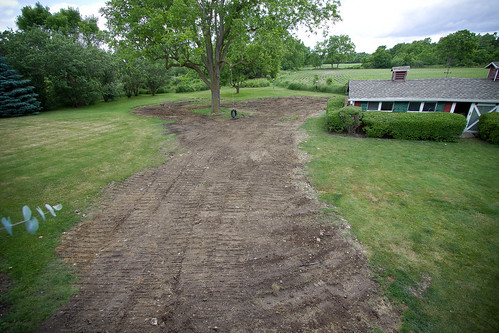 |
| Here is the fine job of rough grading the back yard after the field was installed! |
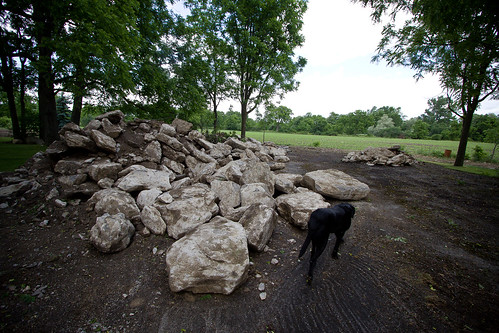 |
| Here is the crazy pile of boulders that Pat dug up and dragged over to my side yard. |
Another issue that Pat and Jim ran into was getting the supply lines into my basement. They actually had to saw-cut the cement pad, and dig by hand down a few feet; and then drill through my rock foundation to get the pipes through the foundation into the basement. In addition to re-pouring the new cement they actually re-routed my sump output underground for me. They really went above and beyond to help me out!
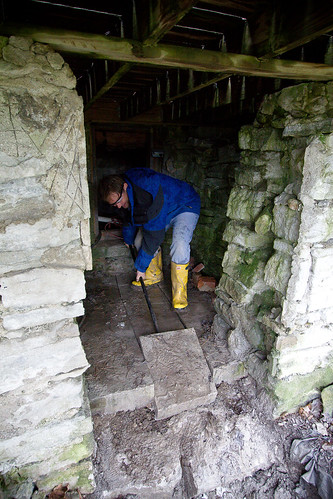
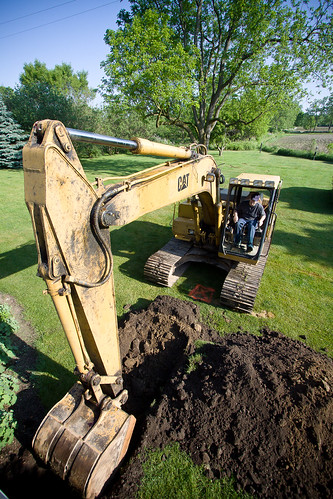
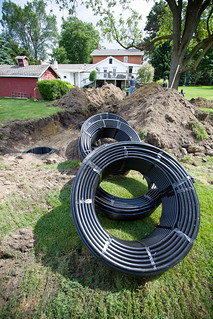
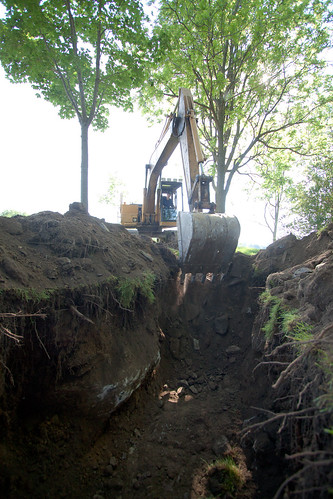
0 comments:
Post a Comment